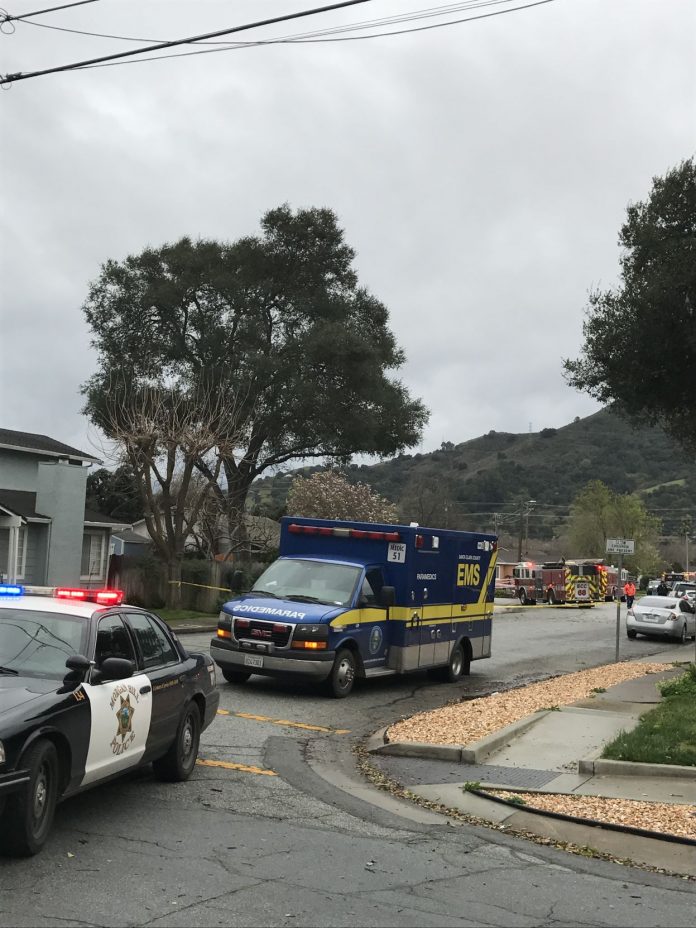
<
The flow of Anderson Reservoir over its emergency spillway for the first time in more than a decade quickly turned from a visitors’ spectacle this weekend to a flooding hazard that shut down a freeway and prompted the evacuation of homes and schools downstream by Tuesday night.
<
Storms over the weekend caused the reservoir, the largest body owned by the Santa Clara Valley Water District, to rise higher than 100 percent of its capacity by Feb. 18, sending water over the spillway located to the northeast of the dam that overlooks Morgan Hill. It was the first time the spillway had been active since 2006, and the rare sight brought spectators to Anderson County Park to catch a view and take selfies of the cascading waterfall created by the flowing runoff into Coyote Creek.
<
But the rains continued, and grew heavier Monday and Tuesday. The creek below the spillway couldn’t contain all the runoff from the hillsides, and the county park’s meadows and picnic areas were submerged as Coyote Creek inched closer to roadways and nearby neighborhoods. Anderson Park was closed to visitors by Monday due to the flooding.
<
“The majority of the flows that are causing Coyote Creek to flood is due to the amount of rain that fell on the very saturated watershed above Anderson and Coyote reservoirs,” SCVWD spokesman Marty Grimes said.
<
Then on Tuesday morning, an aging canal along the east side of U.S. 101 breached, sending Coyote Creek’s waters onto the freeway just north of Cochrane Road. The flooding caused a full closure of all northbound traffic until early in the morning Feb. 22.
<
District crews enacted “temporary repairs” on the canal, known as Coyote Canal, to stop the creek’s flow onto the freeway, Grimes said. The crews created a temporary dam at the breached location, using about 2,000 tons of material to stop the flow of water onto the freeway, which was reopened by early Wednesday morning. The district also created an intentional breach in the canal at a separate location upstream in order to divert water back to Coyote Creek.
<
But the flooding continued upstream, with the biggest impacts in neighborhoods in south San Jose. About 14,000 residents were subject to mandatory evacuations in that city. The city opened evacuation centers throughout town. By Wednesday morning, the floodwaters had begun to recede in the affected residential areas, but the area remained under water, according to various news reports.
<
Coyote Canal was constructed in “the early 20th century” by the Santa Clara County Water Conservation District, the precursor agency of SCVWD, Grimes said. The canal was designed to transport water from Coyote Creek to groundwater recharge ponds near Metcalf Road. The district has not used the canal for this purpose in many years because it has constructed a pipeline to convey water across the valley.
<
Flows peaked over the spillway at Anderson Reservoir about 7 a.m. Feb. 21, Grimes said. Weather reports are predicting mostly dry weather Wednesday through Friday, with another storm on the way to the region by Sunday and Monday.
<
Anderson Reservoir in recent weeks has risen far above the state-restricted maximum level of 68 percent of its capacity due to a series of torrential rains. The rain has fallen into the reservoir faster than the district can release water from an outlet pipe at the bottom of the dam. That outlet pipe has been open since Jan. 9 in an effort to keep the reservoir’s water level down.
<
The state Division of Safety of Dams placed the capacity restrictions on the reservoir after it was found that Anderson’s earthen dam, constructed in 1950, was considered seismically unsafe. Authorities estimate that if a 7.25-magnitude earthquake hit on a fault two kilometers from the dam, it could collapse, potentially releasing massive volumes of water directly into the valley.
SCVWD is preparing to retrofit the dam to make it safe for such an earthquake, but construction isn’t expected to start until 2020.







